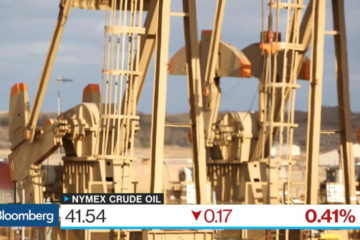Wheat Jumps Most Since ’12 as Funds ‘Spooked’ by Dire Weather

©2015 Bloomberg News
NOCWTK6KLVRB
(Bloomberg) — Wheat futures posted the biggest gain in almost four years on speculation that hedge funds bailed out of record bearish bets amid concern that adverse weather will damage crops in the U.S., the world’s top exporter.
Severe thunderstorms were forecast for the Great Plains on Friday and Saturday with the potential for hail and flash flooding, AccuWeather Inc. said on its website. In the week ended May 5, net-short positions held by funds and large money managers increased 4.2 percent to 111,409 futures and options contracts, government data showed on May 8.
“In one of those bitter twists of fate, the southern and central Plains that were crying for rain all winter are now seen as getting too much,” Dan Manternach, chief economist for wheat, rice and cotton at Doane Advisory in St Louis, said in a telephone interview. Fund managers were “spooked” by the dire weather forecast, he said. Wheat futures for July delivery soared 6.8 percent to settle at $5.1425 a bushel on the Chicago Board of Trade, the biggest jump for a most-active contract since June 25, 2012. The price reached $5.1525, the highest since April 13. Volume on all contracts rose 78 percent above the 100-day average, according to data compiled by Bloomberg.
On May 5, wheat touched $4.6075, the lowest since June 2010, amid forecasts for ample global inventories. The price has dropped 26 percent in the past 12 months. Bigger worldwide grain crops and lower shipping costs mean countries will pay less to import food than any time in the past five years, the United Nations has said.
Crop Conditions
In the week ended May 10, 44 percent of the U.S. winter- wheat crop was rated good to excellent, up from 43 percent a week earlier, government data showed on May 11. “Crops consistently haven’t shown the improvement we expected,” Manternach said. “What’s happening is that the rains were becoming excessive and neutralizing the positive impact in areas that still needed rain.”
The wheat harvest in Kansas, the biggest U.S. grower, will rebound 17 percent this year after April rains helped rescue plants from dry conditions, participants on a three-day crop tour estimated last week. In 2014, dry weather shriveled plants, and the harvest fell to the lowest since 1989.
The latest wheat tour showed some signs of crop rust “and soils that were too muddy,” Manternach said. “The rain is too much of a good thing now,” raising concerns that crop quality will deteriorate, he said. Corn futures for July delivery rise 1.6 percent to $3.68 a bushel, the biggest gain since April 10.
To contact the reporter on this story: Lydia Mulvany in Chicago at lmulvany2@bloomberg.net To contact the editors responsible for this story: Millie Munshi at mmunshi@bloomberg.net Patrick McKiernan







No Comment